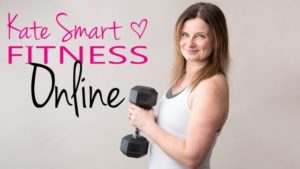Diastasis Recti – 5 things to consider alongside (or before) exercise.

Search the internet for exercises for diastasis recti* and all sorts of stuff gets thrown back to you. Some fabulous information and some dubious choices.
Confusing and ambiguous information can make it really tricky for the client to work out what to do safely and effectively and after nearly a decade of working with women with this condition, I honestly find that 1:1 work is the way forward as so many factors can affect the abdominal wall.
Here are 5 things to consider if you have a diastasis recti (and I would suggest BEFORE thinking about loading the body with formal ‘exercise’) NB I could probably write a longer blog on each and every one of these points – that’s for another day!
1.BREATHING. I know I harp on about this A LOT but it is after all the ground rock in all things to do with the core. Stress, illness, postural issues (see below!) and muscular skeletal changes in pregnancy and motherhood can all lead to breathing being restricted, especially in the upper chest and shoulders. Without a doubt, we need to get a good functional breath down to the belly (and the pelvic floor) to establish a fully functioning core….

2. POSTURE. Before working with any woman I will take a look at how she holds herself (a sure fire way to make someone stand taller!) Daily movement patterns, the muscular/skeletal changes of pregnancy and even mood can have a profound effect on posture and this in turn will affect the function of the abdominal wall. Drop your shoulders forward, stick your bum out and then see how that affects your tummy…..now bring your shoulders back and down and notice the difference….

3. NUTRITION. We are what we eat (or perhaps more accurately, ‘we are what we absorb’). It’s not always the most popular message, but excessive sugar, caffeine, alcohol, processed foods can delay the process and by contrast, ensuring we are truly nourishing ourselves on a cellular level moves us happily towards stronger muscles and connective tissues….. it can also get the bowel moving and as you will see below that is CRUCIAL to a well functioning core!

4. No image for this one – POOING! Avoiding constipation is hugely important. Let’s remember that good bowel health ensures that an essential ‘toxic pathway’ is working well! Backing up our system creates an increase in abdominal pressure which is exactly what we are trying to avoid as we work towards a functional abdominal wall. And let’s not get into ‘pushing’…. I think we ALL know that that is unhelpful (don’t we?)
5. SOFT TISSUE WORK. Again, let’s remember that issues at the midline of the abdominal wall are not isolated or exclusively down to a ‘weak core’. All of my diastasis clients benefit from soft tissue work. Even in lockdown I can teach a client some home workable strategies that will help her. Every woman is different but some recent ‘hot spots’ that have been trouble shooted (trouble shot?) include the hip flexors, areas around the ribs, the obliques, C-section and Appendectomy scars and actually very recently, some super tight adductors (inner thighs). It is very, very common that releasing these troublesome areas allows better integration of the muscles of the core. I do believe that this work can be a catalyst to quicker change in the body.
This is still just the tip of the iceberg but I do hope that this post gives an idea of why answering the question ‘What exercise shall I do for my tummy gap’ is never quick or indeed a definitive one….. there’s a reason behind the ‘holistic’ in Holistic Core Restore@. Check out how to work 1:1 with me here.
*Diastasis Recti – diastasis recti can be described as the stretching, weakening and dysfunction of the front and sides of the abdominal muscles and includes the connective tissues and fascia of these muscles. In media speak, it is the ‘mummy tummy’; the ‘gap’, the ‘dome’ the ‘looking five months pregnant at the end of the day’.

